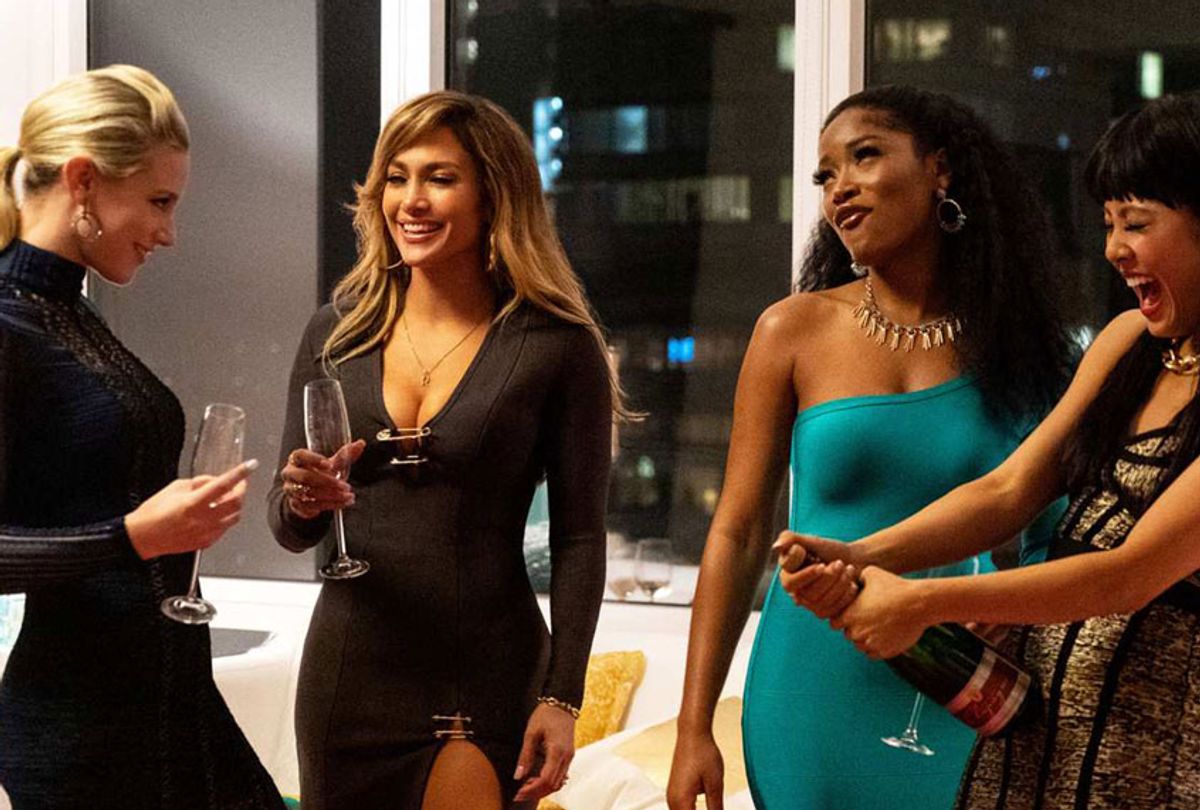Despite ongoing outcry regarding the lack of inclusion and diversity in Hollywood's biggest films — a discussion that has grown so loud that even the Oscars have been forced to take note — the newest research report from Dr. Stacy L. Smith and the Annenberg Inclusion Initiative finds there is "paltry progress toward inclusion." The latest report, titled "Inequality in 1,300 Popular Films: Examining Portrayals of Gender, Race/Ethnicity, LGBTQ & Disability from 2007 to 2019," finds that "Hollywood movies perpetuate a lack of inclusive representation of those from underrepresented racial/ethnic groups, girls and women, the LGBTQ community, and individuals with disabilities."
Read more from IndieWire: "Atlanta" Season 3 and 4 delayed as filming start dates move to early 2021
The new report examined 57,629 characters in 1,300 top films from 2007 to 2019. The study charts an increase in leading and/or co-leading characters from underrepresented racial/ethnic groups, from 27 films in 2018 to 32 films in 2019. Seventeen movies featured a girl or woman from an underrepresented group as a lead or co-lead character in 2019 compared to just 11 in 2018, 4 in 2017 and 1 in 2007.
In February, the study unearthed some good news: it found that more films starred women and people of color in 2019 than they have in over a decade. Forty-three of 2019's 100 top films had a girl or woman in a leading or co-lead role, a slight uptick from 39 in 2018 and a larger gain from 20 in 2007.
Despite these gains for protagonists, a press release for the study notes that "when it comes to all speaking characters, there has been little to no progress in 13 years." The percentage of female-identified speaking characters has not meaningfully increased since 2007, reaching only 34 percent in 2019. Similarly, 34.3 percent of speaking characters were underrepresented, which is below the U.S. population and a slight decrease from 2018.
Read more from IndieWire: Children's programming and animation serve as playgrounds for disabled characters
"After 13 years, it is not clear what might convince entertainment companies to change," said Dr. Smith in a statement. "Despite public statements, the data reveal that there is still apathy and ambivalence to increasing representation of speaking characters overall in popular films. This is both the easiest representational gap to address and one that is essential to strengthen the pipeline to more prominent roles."
The study found that two other on-screen areas continue to fall behind population norms: of the 100 top films of 2019, just 2.3 percent of characters were shown with a disability, a number consistent over the last five years, while just 1.4 percent of all characters in the top films of 2019 were from the LGBTQ community.
The report also provides an "invisibility analysis" to determine how many movies were missing girls and women speaking characters on screen from different underrepresented groups. Across the 100 top films of 2019, the researchers found that 33 films were missing Black/African American girls and women on screen, 55 were missing Asian or Asian American girls or women, 71 were missing Hispanic/Latinas, and 45 were missing girls or women from Multiracial/Multiethnic backgrounds.
"The erasure of girls and women from underrepresented racial/ethnic groups, the LGBTQ community, and those with disabilities remains a hallmark of top-performing Hollywood films," said Dr. Smith. "Intersectional inclusion on screen must be an area for targeted intervention."
The report also looks at inclusion behind the camera. Across 1,447 directors over 13 years, 4.8 percent were women, though the number and percentage of women directors reached a high in 2019. Still, there was little progress for underrepresented directors: across 13 years, 6.1 percent of directors were Black, 3.3 percent were Asian, and 3.7 percent were Hispanic/Latino.
The report also tabulated how the legacy studios and mini-major distributors performed across each inclusion indicator. Universal Pictures and Paramount Pictures both led on six, or 32 percent, of the 19 indicators in the study. Warner Bros. Pictures fared best on three, or 16 percent of the indicators, Sony Pictures outpaced other companies on 11 percent or two indicators, and 20th Century Fox and Lionsgate each achieved a higher percentage on one, or 5 percent, of the indicators compared to their counterparts.
Read more from IndieWire: "The Sit-In": Revisit the "lost" week in 1968 when Harry Belafonte hosted "The Tonight Show"
Walt Disney Studios did not lead on any inclusion indicators in 2019. As the study has previously noted, "when global box office earnings were examined by studio, Disney's female-centered films and stories driven by underrepresented leads/co leads were far and away the box office frontrunners."
"This is a critical moment for the industry to commit to real and substantive change," Dr. Smith said. "Too often the results of studies like this one garner attention without action. As protests for racial justice continue, it is imperative that companies move beyond performative statements and commit to take actions that will result in inclusive hiring practices on screen and behind the camera."
The study is the latest from the Annenberg Inclusion Initiative, which produces an updated report annually, and can be found here.


Shares